Triätschnitte is a traditional dish typically associated with Zürich, Switzerland. Preparation involves a very strange method consistent between a recipe I found from 1892 and modern ones. Stale bread slices are first dipped in a thick syrup made from water and sugar, coated with spiced sugar then baked before resting in a warm, sweet mulled red wine sauce until they soften. No sweeter than maple syrup-drenched French toast, this unusual dish is surprisingly delicious as a late afternoon or evening snack or for dessert.
Usually categorized as an “old dessert”, references to Triätschnitte date back as far back as the late 18th century. A similar dish was also known in Schwabing, a borough in the northern section of my father’s birth city of Munich, Germany. While certainly still around and made in some homes, Triätschnitte is no longer very common.
It is fair to assume Triätschnitte began as yet another frugal dish developed to use up, and not waste, old bread. Years ago, most wines were not of great quality and turned rather quickly since many people did not have proper storage capabilities. It was common practice to steep these wines with spices and honey or sugar to help preserve them and to mask the bad flavor. There’s the sauce!
A key ingredient to this dish is the spiced sugar blend known as Magentraes, which has been known in Switzerland since the late 16th century. Now used to flavor and sweeten dishes, originally it was considered a medicine mixed and sold by the chemist and thought to aid digestion. The first culinary reference appeared in a cookbook published in 1751. Jean Landolt (founder of the Landolt Hauser spice mill in Näfels, Canton Glarus) began selling his own formulation called Magentraes Trietolt in 1900 which includes sugar with spices such as cinnamon, nutmeg, cloves, sandalwood and ginger. To learn more of the history of this product by Landolt-Hauser click here for an audio clip.
A note on the product and dish name derivations: Magen means stomach. The Swiss German dialect words Träs (Traes), Triät and Triet are derived from the German expression “Trisenet” which describes a roughly ground powder. The generic term Magentraes means stomach powder. The trademarked name Trietolt is a conjunction of “Triet” and of “olt” from the last 3 letters of his (and my) family name Landolt. The name of the dish, Triätschnitte roughly means a powdered slice.
A printable recipe for both Triätschnitte and Magentraes (if unavailable for purchase) can be found at the bottom of the step-by-step instructions. Ingredients include granulated sugar, icing sugar, Magentraes Trietolt, bread, lemon zest, red wine, water and a cinnamon stick.
Most modern recipes in Switzerland call for the ever popular white flour braided butter egg milk bread called Butterzopf (Tresse ay beurre and Treccia al burro) which is essentially the same thing as challah bread. The bread listed in older recipes, including in the 1892 cookbook I’ve been using, as well as in some newer recipes was simply called Einback (which means first bake) – a slightly sweet, yeasted, egg, milk bread. A common version is a rectangular loaf made of individual pieces of dough placed close together. When it rises and bakes, the pieces grow together so when pulled out of the oven, it’s ridged on top and looks like a row of partially cut slices. It has this strange name because this bread was then sliced, placed on a baking sheet and baked again forming…Zweiback (second bake!!)
Slice fresh or, ideally, 2 to 3 day old bread into finger-thick slices. (Un-traditionally, I also cut a few finger-size pieces for testing and nibbling.) Place on a baking sheet in the oven to lightly dry out. They should not become rock hard or brown.
Mix sugar and water in a saucepan.
Bring to a boil.
Reduce heat and let it simmer until it thickens to the consistency of thin honey. Remove from the heat and let cool slightly. In the meantime, combine confectioners’ icing sugar and Magentraes Trietolt or homemade spiced sugar.
Dip both sides of each slice into the warm sugar water mixture then into the spiced sugar mixture. Place the coated slices on a parchment paper-lined sheet pan.
Place in the oven for 10 minutes.
Turn each slice over and bake for another 5 minutes.
While the spiced sugar-coated slices are baking, pour red wine into a pan. Add sugar, a cinnamon stick and grated lemon peel.
Bring to a boil. Reduce the heat and gently simmer for about 15 minutes.
Place the baked bread slices in a flat-bottomed dish with sides, preferably individual serving dishes. Gently ladle the warm mulled wine over and around the bread. Let them soak 30 minutes, turning halfway through.
The slices will absorb much of the sauce making them soft and flavor-packed.
- ¾ cup / 5 oz. / 150 grams white granulated sugar
- ½ cup / 4 oz. / 150 ml water
- 1 cup ( 4.5 oz. / 125 grams) confectioners’ icing sugar
- 1 tablespoon Magentraes Trietolt spiced sugar (if unavailable, see below)
- 8 finger-thick slices challah, brioche, Zopf or other similar white bread
- 2 cups / 16 oz. / 500 ml red wine
- ⅓ cup / 2 oz. / 60 grams sugar
- zest from half of a lemon
- 1 cinnamon stick
- IF MAGENTRAES UNAVAILABLE, USE 1 TBS OF THIS RECIPE:
- 1 cup granulated sugar
- 1½ teaspoons red sandalwood powder
- 1½ teaspoons ground cinnamon
- ½ teaspoon ground nutmeg
- ¼ teaspoon ground ginger
- 1/16 teaspoon (or very tiny pinch) ground cloves
- 1 tablespoon vanilla sugar (optional)
- ⅛ teaspoon ground anise seeds (optional)
- Combine all ingredients and store in an airtight container.
- It is preferable to use 2 to 3 day old stale bread but using fresh bread is also OK. In both cases, lay finger-thick slices of bread in a single layer on a sheet pan.
- Place them in a pre-heated 350°F / 175°C oven to dry out a bit – not rock hard and not browned.
- While the bread is drying in the oven, bring granulated sugar and water to a boil in a small saucepan.
- Reduce the heat and simmer until it forms a thick syrup the consistency of thin honey.
- Remove from heat and let cool slightly.
- Combine the icing sugar and the Magentraes Trietolt or homemade spiced sugar in a large flat bowl or plate with sides.
- Taking care the sugar syrup is not hot enough to burn fingers, dip both sides of one piece of bread into the warm syrup.
- Immediately place in the spiced sugar mixture and coat both sides.
- Place on a parchment-lined sheet pan or cookie sheet.
- Repeat with remaining slices.
- Place in the middle of the pre-heated oven and bake 10 minutes.
- Turn slices over and bake 5 more minutes.
- While the sugar-coated slices are baking, place wine, sugar, lemon zest and cinnamon stick in a saucepan.
- Bring to a boil.
- Reduce heat and simmer about 15 minutes.
- Remove the cinnamon stick.
- Place baked bread slices in deep-sided flat-bottomed individual plates (or in a large pan suitable for serving) and pour hot wine mixture over them.
- Let them soak 30 minutes, turning each slice over halfway through.
- If they are not completely soft after a total soaking time of 30 minutes, leave them longer.
- Serve immediately.
- NOTE:
- Bread can be prepared and baked several days in advance before soaking and serving. Cool completely and store in an airtight container.
- Mulled wine sauce can be prepared several days in advance. Remove the cinnamon stick then store in a closed container in the refrigerator. Be sure to reheat before pouring over the bread.
- OK to use grape juice instead of wine for a children's version.
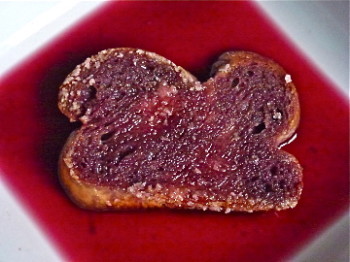
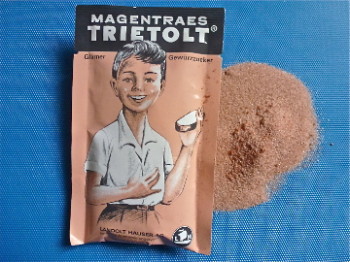
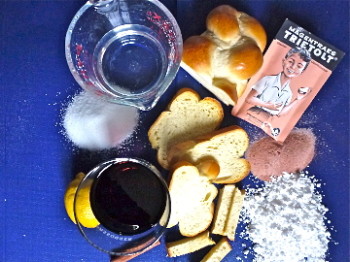
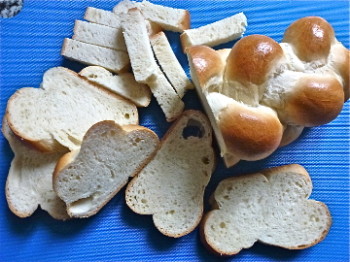

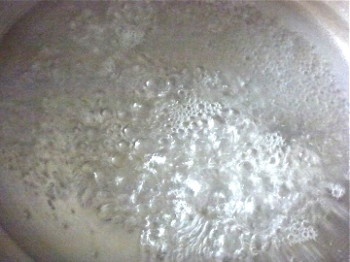
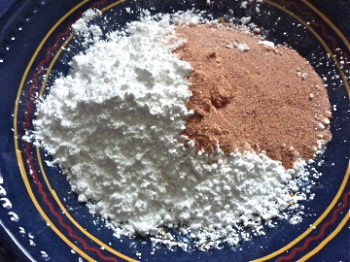
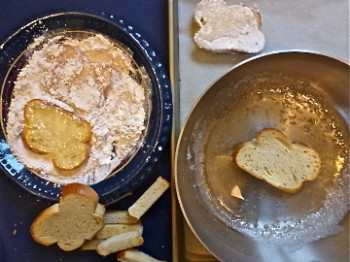

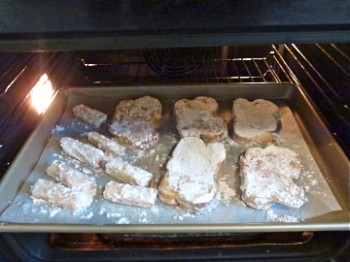
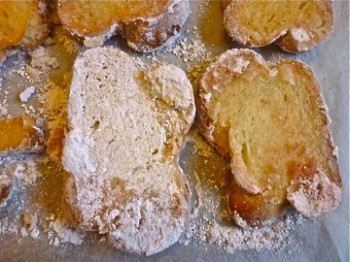
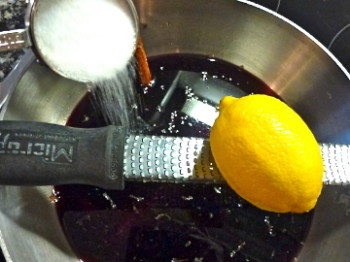
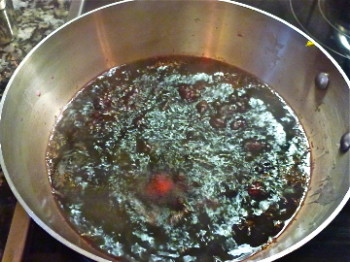






[…] Eber, a former radio journalist at World Radio Switzerland, has shared a recipe for homemade Magenträs via her blog, Crawfish and Caramel. In this same post, you’ll also […]